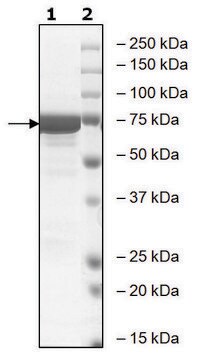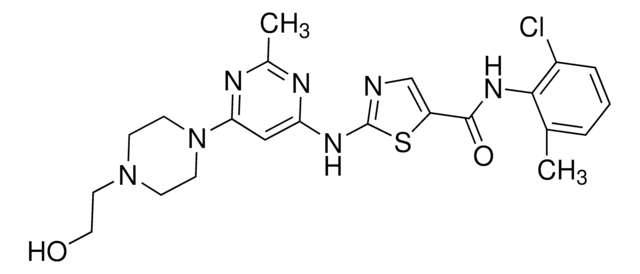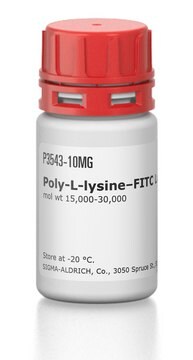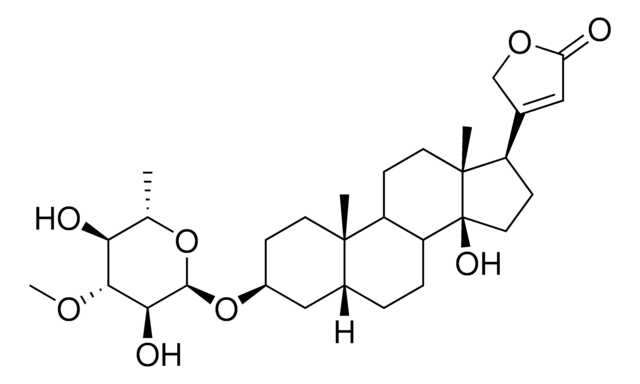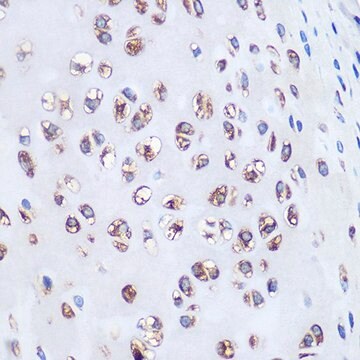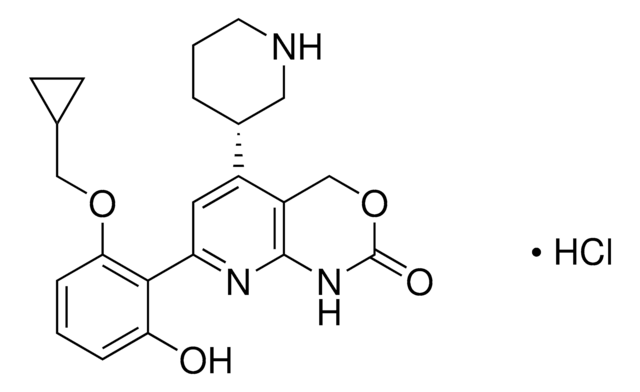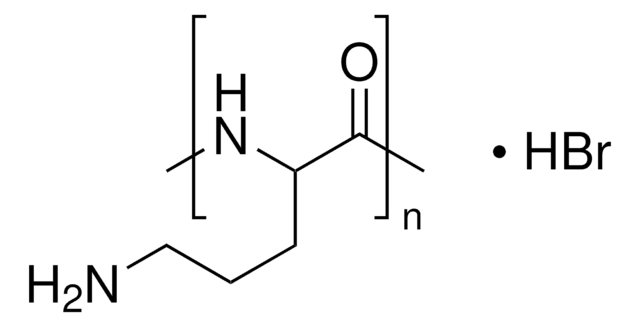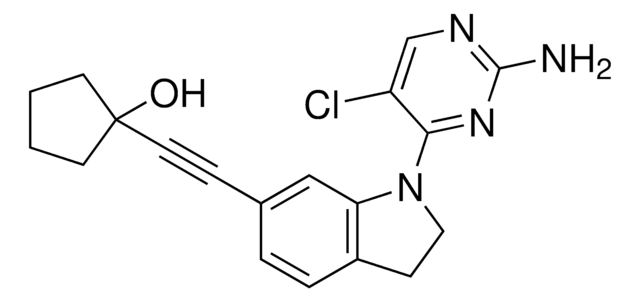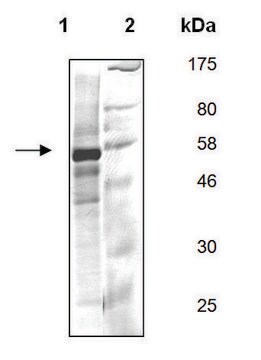F6557
FYN A, active, GST tagged human
PRECISIO® Kinase, recombinant, expressed in baculovirus infected Sf9 cells, ≥70% (SDS-PAGE), buffered aqueous glycerol solution
Synonym(s):
MGC45350, SLK, SYN
Sign Into View Organizational & Contract Pricing
All Photos(1)
About This Item
UNSPSC Code:
12352200
NACRES:
NA.32
Recommended Products
recombinant
expressed in baculovirus infected Sf9 cells
Quality Level
product line
PRECISIO® Kinase
Assay
≥70% (SDS-PAGE)
form
buffered aqueous glycerol solution
specific activity
141-195 nmol/min·mg
mol wt
~85 kDa
UniProt accession no.
shipped in
dry ice
storage temp.
−70°C
Gene Information
human ... FYN(2534)
General description
FYN proto-oncogene is a member of the Src family of tyrosine kinases, and has a molecular weight of 59kDa. Post-synthesis this protein is N-myristoylated on cytoplasmic polysomes. It is palmitoylated after it has been targeted to the cell membrane. This protein can also be acylated twice, which leads to its clustering into microdomains in the caveolae-like membrane.
Biochem/physiol Actions
FYN proto-oncogene interacts with multiple signaling molecules, and is involved in T-cell receptor (TCR) signaling, brain function control, along with the control of adhesion-mediated signaling. It might have potential as a target for autoimmune disorders and alcohol addiction. It is also implicated in melanoma tumorigenes in a immunoglobulin (Ig)E-mediated manner. In mesenchymal stem cells, it controls RhoA and adipogenesis, through its interaction with mTORC2 (mammalian target of rapamycin complex 2).
Physical form
Supplied in 50 mM Tris-HCl, pH 7.5, with 150 mM NaCl, 0.25 mM DTT, 0.1 mM EGTA, 0.1 mM EDTA, 0.1 mM PMSF, and 25% glycerol.
Legal Information
PRECISIO is a registered trademark of Merck KGaA, Darmstadt, Germany
Storage Class Code
10 - Combustible liquids
WGK
WGK 1
Flash Point(F)
Not applicable
Flash Point(C)
Not applicable
Choose from one of the most recent versions:
Already Own This Product?
Find documentation for the products that you have recently purchased in the Document Library.
William R Thompson et al.
Stem cells (Dayton, Ohio), 31(11), 2528-2537 (2013-07-10)
Mechanical strain provides an anti-adipogenic, pro-osteogenic stimulus to mesenchymal stem cells (MSC) through generating intracellular signals and via cytoskeletal restructuring. Recently, mTORC2 has been shown to be a novel mechanical target critical for the anti-adipogenic signal leading to preservation of
Guillermina Yanek Jiménez-Andrade et al.
Journal of hematology & oncology, 6, 56-56 (2013-08-07)
High concentrations of plasmatic IgE have been related to distinct systemic inflammatory conditions that frequently predispose individuals to hypersensitivity reactions. Although effects of IgE have been suggested to relay on the low-intensity activation of distinct effector elements of the immune
Kechen Ban et al.
Blood, 111(5), 2904-2908 (2008-01-09)
Chronic myelogenous leukemia (CML) invariably progresses to blast crisis, which represents the most proliferative phase of the disease. The BCR-ABL1 oncogene stimulates growth and survival pathways by phosphorylating numerous substrates, including various Src family members. Here we describe up-regulation, in
M D Resh
The international journal of biochemistry & cell biology, 30(11), 1159-1162 (1998-12-05)
Fyn is a 59 kDa member of the Src family of tyrosine kinases. The protein is synthesized and N-myristoylated on cytosolic polysomes and then rapidly targeted to the plasma membrane, where it is palmitoylated. Dually acylated Fyn clusters in caveolae-like
Hyang-Sook Hoe et al.
The Journal of biological chemistry, 283(10), 6288-6299 (2007-12-20)
Dab1 is an intracellular adaptor protein that interacts with amyloid precursor protein (APP) and apoE receptor 2 (apoEr2), increases their levels on the cell surface, and increases their cleavage by alpha-secretases. To investigate the mechanism underlying these alterations in processing
Our team of scientists has experience in all areas of research including Life Science, Material Science, Chemical Synthesis, Chromatography, Analytical and many others.
Contact Technical Service